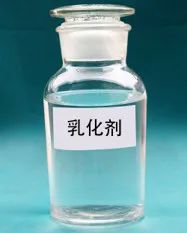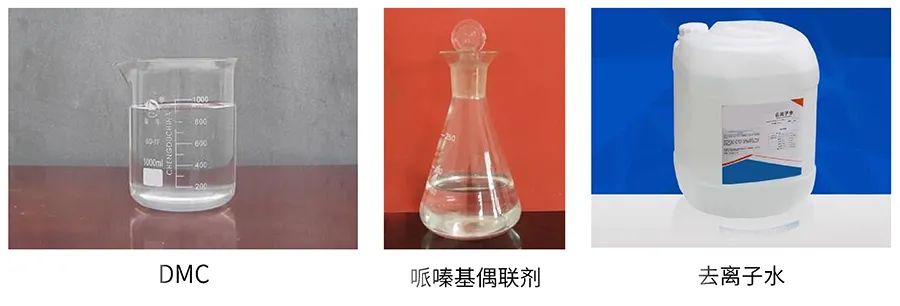1、Polyether
As the main raw material, polyether reacts with isocyanate to produce carbamate, which is the skeleton reaction of foam products. In the case of the same functional degree, when the molecular weight increases, the tensile strength, elongation and resilience of the foam increases, and the reactivity of the same kind of polyether decreases; in the case of the same equivalent value (molecular weight/functional degree), the functional degree increases, the reaction is relatively accelerated, the cross-linking of the generated polyurethane increases, the hardness of the foam increases and the elongation decreases. The average off energy of polyol should be above 2.5, if the average off energy is too low, the foam body will be poorly recovered after being pressed.

If the amount of polyether is more, it is equivalent to the reduction of other raw materials (TDI, water, catalyst, etc.), which will easily cause the foam products to crack or collapse.
If the amount of polyether is low, the foam products are hard, elasticity is reduced, and the handfeel is not good.
2、Foaming agent

Generally, in the manufacture of polyurethane block foam with density greater than 21, only water (chemical blowing agent) is used as blowing agent, and low boiling point compounds (physical blowing agent) such as methylene chloride (MC) are used as auxiliary blowing agent only in low density formulations or super soft formulations.
Auxiliary blowing agent will make the density and hardness of the foam decreased, due to its gasification absorbed part of the reaction heat will slow down the curing, the need to increase the amount of catalyst. Due to the absorption of heat, the risk of burning core is avoided. uc;,JX!bN
Foaming ability can be used foaming index (100 parts of polyether used in water or water equivalent number) to reflect: m – the amount of foaming agent
Foaming index IF = m (water) + m (F-11) / 10 + m (MC.) / 9 (100 parts of polyether)
Water as blowing agent reacts with isocyanate to generate urea bond and give off a lot of CO2 and heat, which is a chain growth reaction.
The amount of water is more, the density of foam decreases and the hardness increases, meanwhile the pillar of bubble hole becomes smaller and weaker, which reduces the bearing capacity and makes it easy to collapse and crack the bubble. The amount of TDI consumed increases, and more heat is released, which makes it easy to burn the heart. If the water volume exceeds 5.0 parts, physical foaming agent must be added to absorb part of the heat to avoid the occurrence of core burning.
The amount of water is less, the amount of catalyst is reduced accordingly, but the density increases “”F’
3、Toluene diisocyanate

General soft foam with TDI80/20, a mixture of 2,4 and 2,6 isomers. Available cooling method to prepare T100 that is pure 2,4TDI.
TDI dosage = (8.68 + m water × 9.67) × TDI index. tdi index is generally 110-120.
Isocyanate index increases in a certain range, the foam hardness increases, but after reaching a certain point the hardness no longer increases significantly, while the tear strength, tensile strength and elongation decrease, the foam forms large pores, the closed pore rises, the resilience decreases, the surface is sticky for a long time, the maturation time is long and causes core burning.
Low isocyanate index will cause foam cracks, poor resilience, poor strength, large permanent deformation in compression and dampness on the surface.
4、Catalyst
Amine: generally use A33 whose role is to promote the reaction of isocyanate and water, adjust the foam density, bubble opening rate, etc., mainly to promote the foaming reaction.
More amine: foam products appear splitting, foam with holes or bubble eyes
Less amine: the foam appears shrinkage, closed hole, the bottom of the foam products issued thick.
Tin: Generally use stannous octanoate T-9; T-19 is catalytic activity is very high gel reaction catalyst, mainly to promote the gel reaction, that is, the late reaction.
Tin more: gelation fast, viscosity increase, poor resilience, poor permeability, resulting in closed hole phenomenon. If the appropriate increase in its dosage can obtain a relaxed good open-hole foam, and further increase the dosage so that the foam gradually becomes tight, resulting in shrinkage and closed-hole.
Tin less: insufficient gel, the foaming process causes splitting. There is cracking at the edge or top, and there is debonding and burriness.
Reducing amine or increasing tin can both increase the strength of the polymer bubble film wall when large amounts of gas occur, thus reducing hollowing or cracking.
Whether a polyurethane foam has an ideal open or closed cell structure depends largely on the balance between the rate of gel reaction and the rate of gas] expansion during foam formation. This balance can be achieved by adjusting the type and amount of tertiary amine catalyst and foam stabilization and other additives in the formulation.
5、Foam stabilizer (silicone oil)
Foam stabilizer is a kind of surfactant, which can make polyurea well dispersed in the foaming system, playing the role of “physical cross-linking point”, and can obviously improve the early viscosity of the foam mixture to avoid cracking bubbles. On the one hand, it has emulsifying effect, which can enhance the mutual solubility between the components of foam materials, on the other hand, the addition of silicone surfactant can reduce the surface tension of liquid r, which can reduce the free energy required for gas dispersion, so that the air dispersed in the raw materials can be nucleated more easily during the mixing process, which can help the generation of small bubbles, adjust the size of foam pores, control the structure of pores, and improve the stability of foaming; prevent The foam pore deflates and breaks, makes the foam wall elastic, and controls the foam pore size and uniformity. It stabilizes the foam in the early stage of foaming, prevents the foam in the middle of foaming, and makes the foam pores connected in the late stage of foaming. General foaming agent, POP dosage the more silicone oil dosage.
The amount of more: so that the late foam wall elasticity increases, should not break, the bubble hole fine. Cause closed pore.
The amount of less: foam rupture, collapse bubble after the start, aperture larger, easy and bubble.
6、The influence of temperature
The foaming reaction of polyurethane is accelerated with the rise of material temperature, which will cause the danger of burning core and fire in sensitive formulations. General control of polyol and isocyanate components of the temperature remains unchanged. The foam density decreases when foaming and the material temperature increases accordingly. The same formula, the same material temperature, high temperature in summer, the reaction speed is accelerated, resulting in foam density, hardness decline, elongation increase, mechanical strength increase. In summer, the TDI index can be increased appropriately to correct the decline in hardness.
7、The effect of air humidity
Humidity increases, due to the reaction between the isocyanate group part of the foam and the moisture in the air, resulting in the decrease of hardness, so the amount of TDI can be increased appropriately when foaming. Too much will cause the ripening temperature is too high causing heartburn.
8、The effect of atmospheric pressure
The same formula, foaming at high altitude, foam products with small density.
Notes.
1、In the process of foam formation, gel reaction and foaming reaction occur together, but the
There is competition between the reactions, and generally the speed of foaming reaction is greater than the speed of gel reaction.
Gel reaction — the formation reaction of carbamate, (reaction with -OH)
Foaming reaction — refers to the reaction with the participation of water, generating urea and producing bubbles
2, nucleating agent — substances that cause the formation of bubbles, such as microscopic solid particles in the system, liquid
Foam stabilizer or originally dissolved in the material, such as fine bubbles; including air or nitrogen dissolved in polyol and isocyanate, carbon dioxide, foam stabilizer, carbon black and other fillers. However, the gas produces more bubbles in the material; the more stabilization and the finer the bubble pores generated.
The number of bubbles formed in the foaming system and the size of the bubble holes in the foam depends on the role of additional nucleating agents; more nucleating agents, more bubbles, smaller bubble holes.
When the temperature increases, the solubility of the gas in the liquid decreases, thus more bubbles will be formed or make the previous starting run grow. Longer emulsion time is conducive to the growth of large bubbles.
Increase the amount of catalyst, can shorten the emulsion time, due to the gel reaction and bubble formation of the competition reaction can get fine pore foam.
3、Whether the foam has an ideal open or closed pore structure depends mainly on whether the gelation rate and the gas expansion rate are balanced during the foam formation. This balance can be achieved by adjusting the type and amount of additives such as tertiary amine catalyst and foam stabilizer in the formulation.

